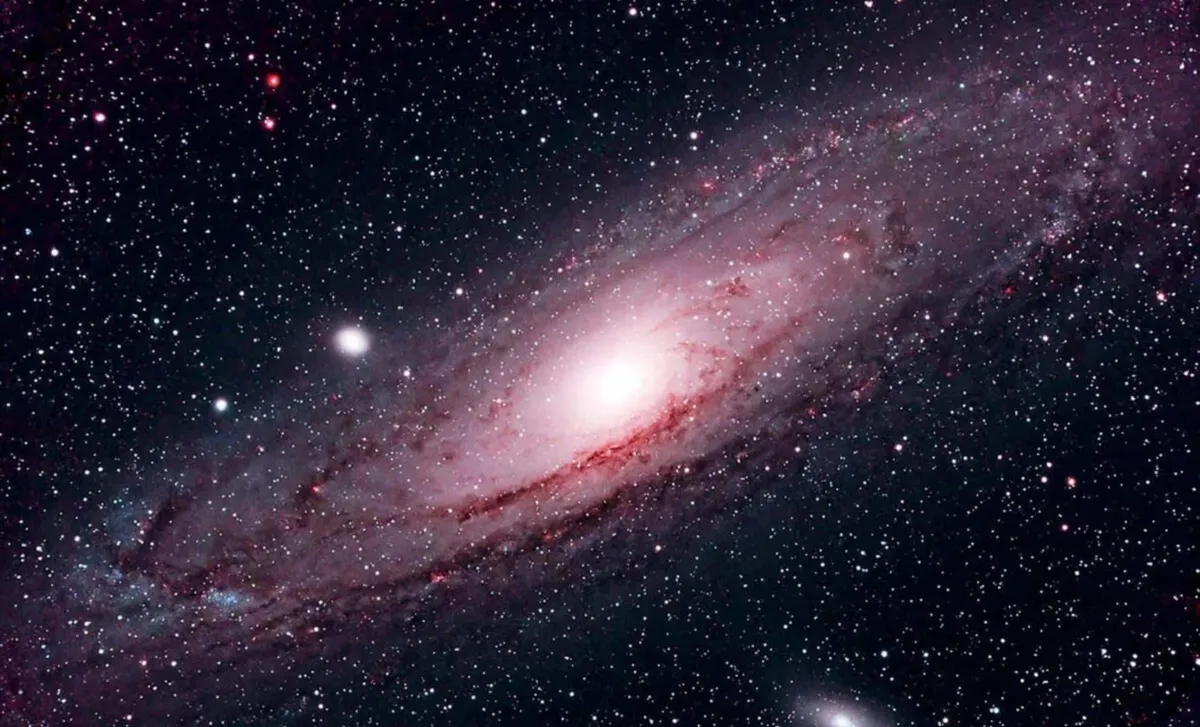
The Andromeda Galaxy, located an astonishing 2.5 million light-years away from Earth, is one of the most extensively studied celestial bodies in the night sky. To the naked eye, it manifests as a hazy, spindle-shaped glow; however, it conceals a complex and vast system of satellite galaxies. Recent advancements from NASA’s Hubble Space Telescope have enabled the first-ever three-dimensional mapping of these satellite galaxies, uncovering an asymmetrical structure shaped by ancient cosmic events. This discovery contrasts sharply with the relatively stable satellite population of the Milky Way, suggesting a history laden with violent interactions, possibly stemming from a significant collision billions of years ago.
With over 1,000 orbits dedicated to this comprehensive survey, astronomers are piecing together the evolutionary history of the Andromeda Galaxy, shedding light on the processes involved in galaxy formation and evolution over cosmic time. Their findings, which have been published in The Astrophysical Journal, reveal a dynamic and intricate satellite system that challenges established assumptions about galactic ecosystems. The study suggests that Andromeda's history is far more tumultuous than previously believed.
At the core of this groundbreaking research lies a fundamental question: Why does Andromeda’s satellite system differ so significantly from that of the Milky Way? While both galaxies host satellite galaxies, their evolutionary trajectories diverge markedly. Many of the Milky Way’s smaller companions have seemingly exhausted their ability to form new stars ages ago. In stark contrast, Andromeda’s dwarf galaxies have continued their star formation activities much later than anticipated, challenging existing theories of galaxy evolution.
Lead author Alessandro Savino from the University of California at Berkeley notes, “The duration for which the satellites can continue forming new stars really depends on their mass and proximity to the Andromeda galaxy.” This observation indicates that Andromeda’s massive gravitational influence, along with the remnants of past mergers, has disrupted and reshaped its satellite population in ways that are not evident in the Milky Way. Unlike our home galaxy, where many small satellites ceased star formation billions of years ago, Andromeda's companions seem to have maintained a steady stream of gas, allowing for prolonged star formation.
One of the most compelling revelations from the Hubble survey is the unusual configuration of Andromeda’s satellite galaxies. Rather than being randomly dispersed, nearly half of these satellites are concentrated in a single plane, all orbiting in the same direction. This unexpected feature has left astronomers seeking explanations. Principal investigator Daniel Weisz, also from the University of California at Berkeley, states, “Everything scattered in the Andromeda system is very asymmetric and perturbed. It does appear that something significant happened not too long ago.”
This asymmetry suggests a turbulent past for Andromeda. A major merger—potentially with another large galaxy—may have disrupted its satellite system, leading to an ordered yet chaotic configuration. Evidence for this event can be found in Andromeda's most notable satellite galaxy, M32, believed to be the stripped core of a larger galaxy that merged with Andromeda eons ago. Such an event would have dramatically transformed Andromeda’s satellite system, altering orbits and sparking new star formation in some galaxies. If confirmed, this would mean that Andromeda’s current state represents a cosmic snapshot of a galaxy in flux, still adjusting from a collision that reshaped its structure and dynamics.
For decades, astronomers have leaned on the Milky Way as a model for understanding the processes of galaxy formation. However, this new exploration of Andromeda challenges the notion that large galaxies evolve uniformly. Weisz elaborates, “There’s always a tendency to use what we understand in our own galaxy to extrapolate more generally to other galaxies in the universe.” This study highlights that low-mass galaxies in various environments have followed distinct evolutionary paths compared to those in the Milky Way, prompting new inquiries into the universality of current galaxy formation models.
A particularly intriguing aspect of Andromeda’s satellite galaxies is their unexpected ability to continue forming stars well beyond the theoretical predictions. Many of these smaller galaxies seem to have sustained access to reservoirs of gas for extended periods, fueling a gradual but ongoing star formation. This phenomenon does not align with existing computer simulations, presenting scientists with a perplexing puzzle that defies current expectations.